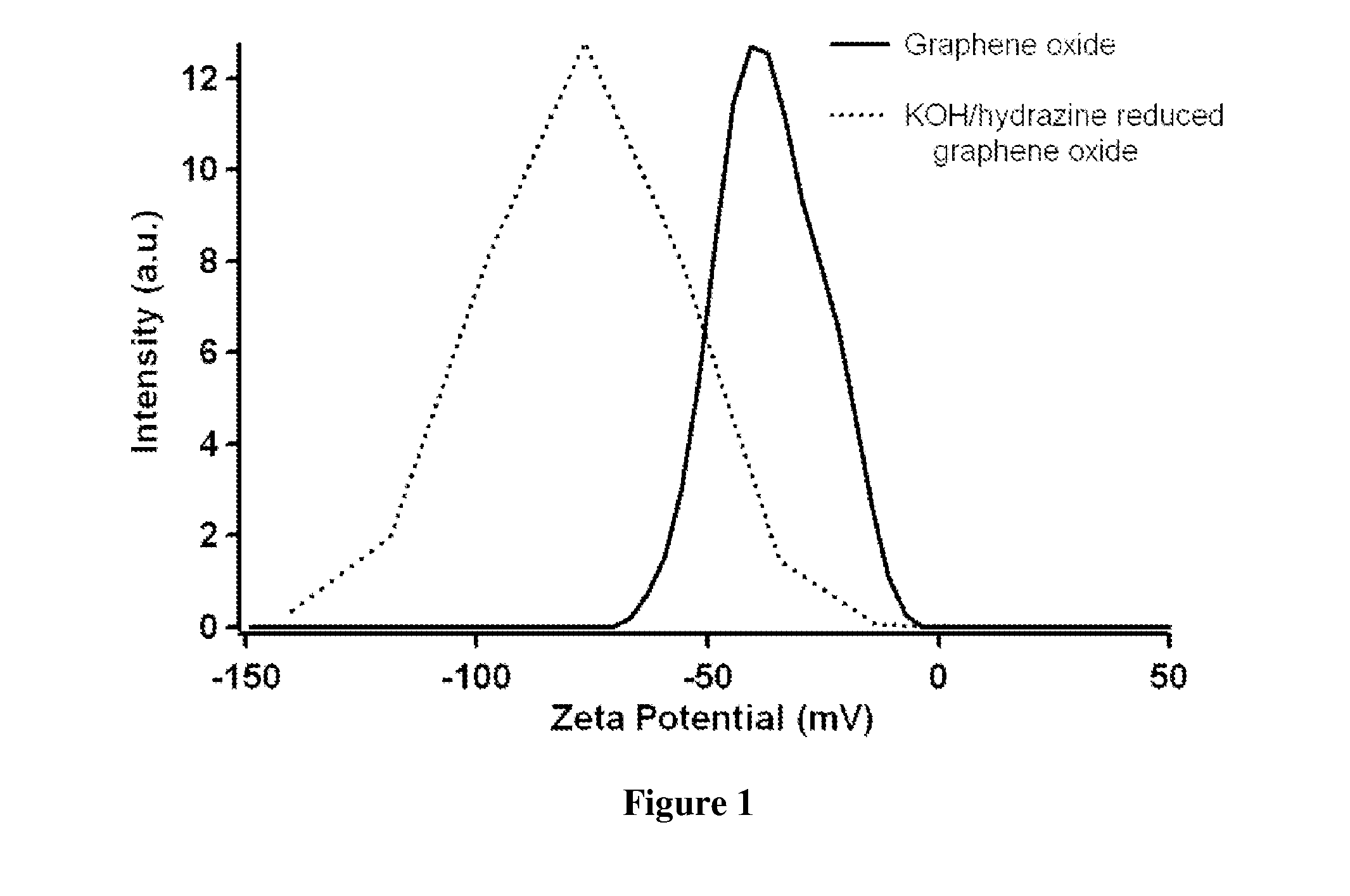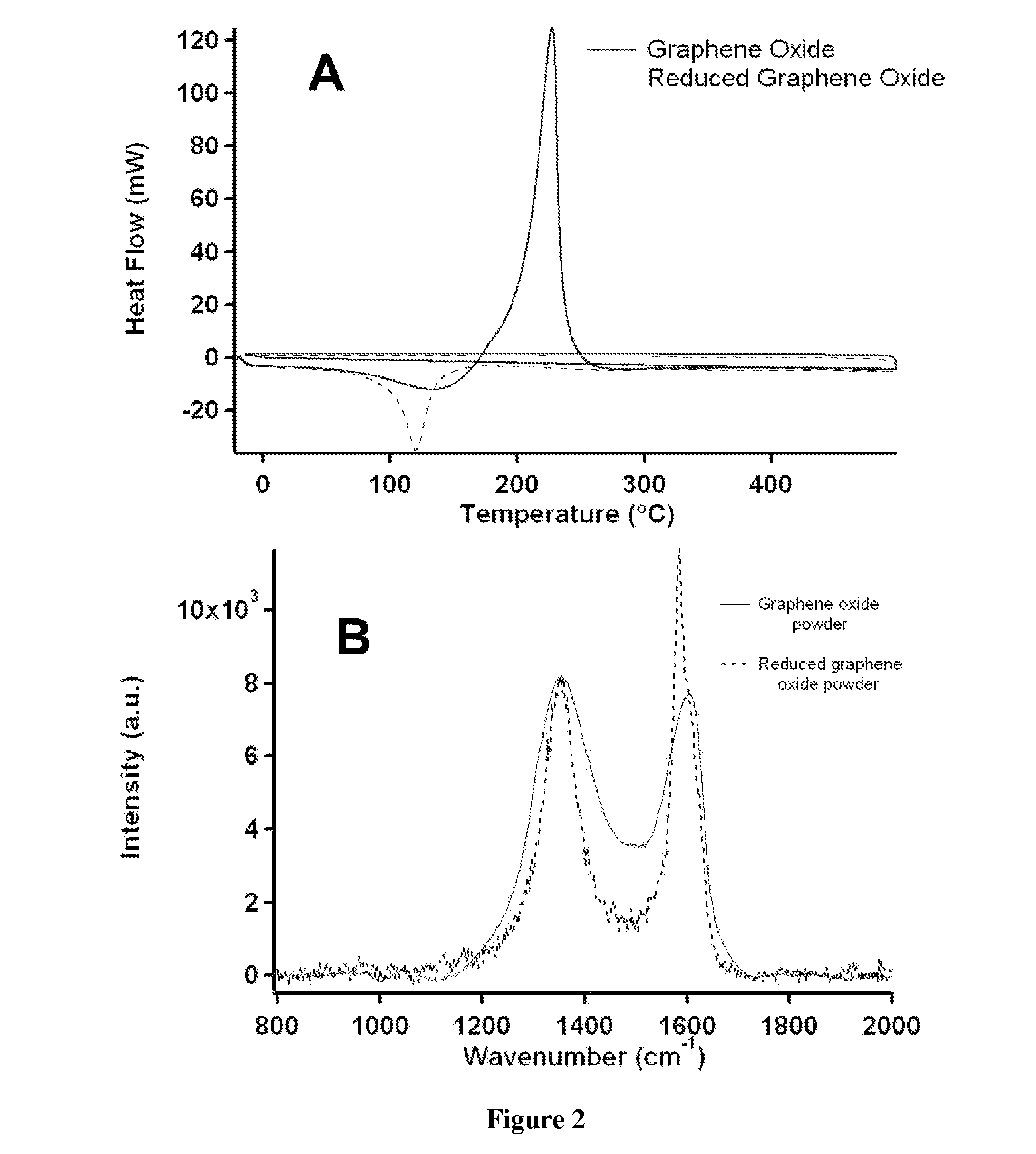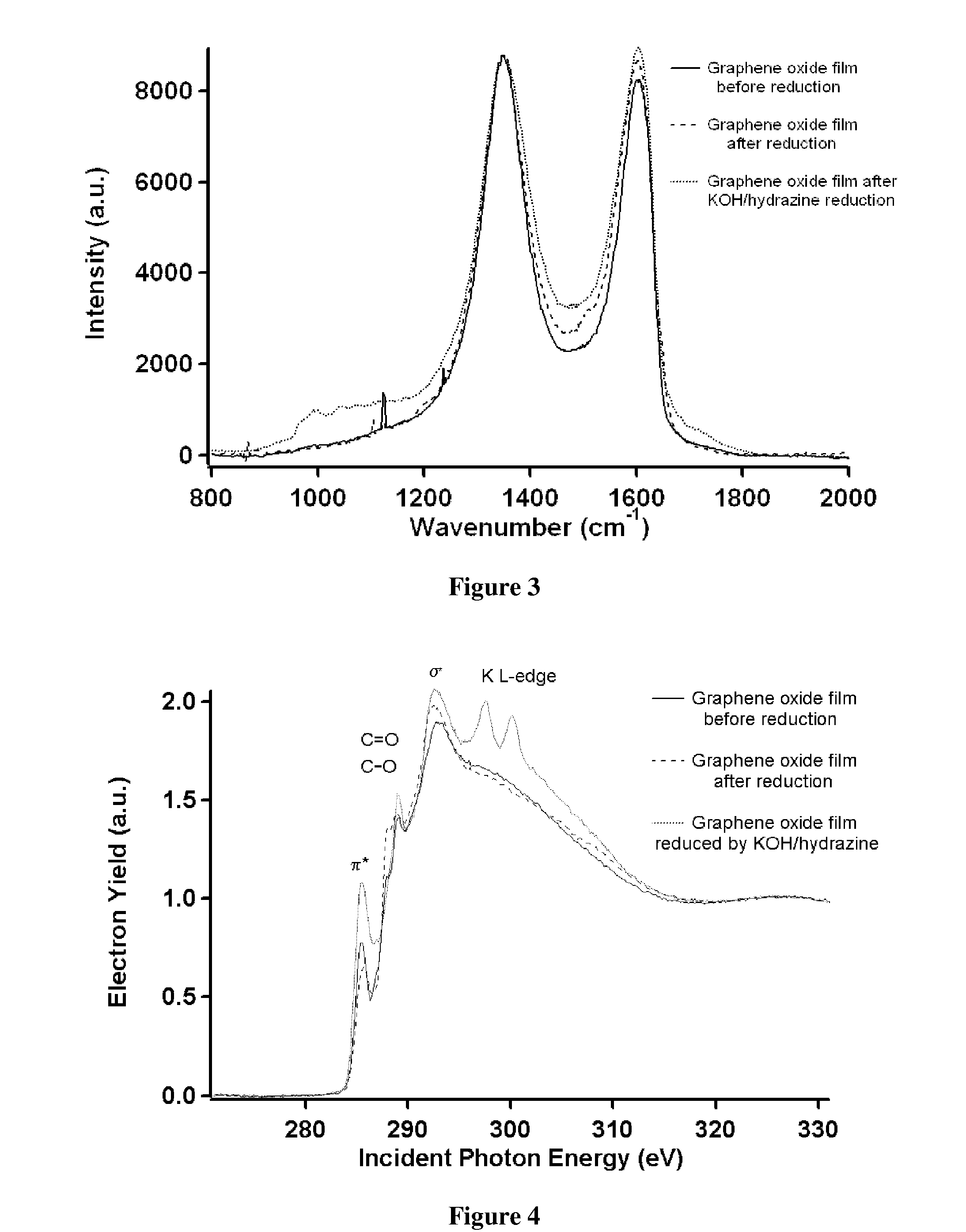Graphene Films and Methods of Making Thereof
a graphene film and graphene technology, applied in the field of graphene films and methods of making graphene films, can solve the problems of low yield of typically sub-100 m graphene flakes, unsuitable for precise positioning of graphene structures within device architectures, and inability to scale to practical quantities
- Summary
- Abstract
- Description
- Claims
- Application Information
AI Technical Summary
Benefits of technology
Problems solved by technology
Method used
Image
Examples
example 1
[0064]Provided in this example are two approaches for fabricating large-area graphene samples on conductive and non-conductive substrates. In the first approach, electric fields are used to deposit oriented conformal graphene films on conducting substrates such as stainless steel, carbon steel, and indium tin oxide (ITO). In the second approach filtration and transfer printing are combined to obtain large-area graphene films on glass and polyimide substrates. The approach pertains to a facile and fully scalable electrophoretic deposition approach for the fabrication of smooth conformal films of graphene oxide and chemically derived graphene sheets on conductive substrates. Two distinct approaches for fabricating chemically derived graphene films by electrophoretic deposition are disclosed. In the first approach, exfoliated graphene oxide sheets are electrophoretically deposited onto an ITO-coated glass substrate from aqueous solution and the resulting films are reduced by dipping in...
example 2
[0103]Several examples of the reduction of graphene oxide by post-processing treatment with reducing agents. Data for these films is shown in Table 3. The provided values represent the sheet resistance measured for ˜100 nm thick graphene oxide films reduced by different reducing agents. A lower sheet resistance value indicates better recovery of the conjugated graphene structure. A higher dichroic ratio value indicates better alignment of the graphene films on the substrate.
TABLE 3Sheet ResistanceReducing AgentDichroic Ratio(kohm / square)Vapor hydrazine, annealed−0.69 ± 0.08 6500 ± 1000Vapor hydrazine, not annealed−0.33 ± 0.0514000 ± 1500Liquid phenylhydrazine−0.33 ± 0.042000 ± 500Sodium borohydride−0.67 ± 0.03 5000 ± 3000Aqueous hydrazine−0.61 ± 0.0728000 ± 2400Vapor phenylhydrazine, annealed−0.04 ± 0.10 250 ± 100Vapor hydrazine, not annealed−0.47 ± 0.05134000 ± 30000No reducing agent−0.42 ± 0.03NA
PUM
 Login to View More
Login to View More Abstract
Description
Claims
Application Information
 Login to View More
Login to View More - R&D
- Intellectual Property
- Life Sciences
- Materials
- Tech Scout
- Unparalleled Data Quality
- Higher Quality Content
- 60% Fewer Hallucinations
Browse by: Latest US Patents, China's latest patents, Technical Efficacy Thesaurus, Application Domain, Technology Topic, Popular Technical Reports.
© 2025 PatSnap. All rights reserved.Legal|Privacy policy|Modern Slavery Act Transparency Statement|Sitemap|About US| Contact US: help@patsnap.com



